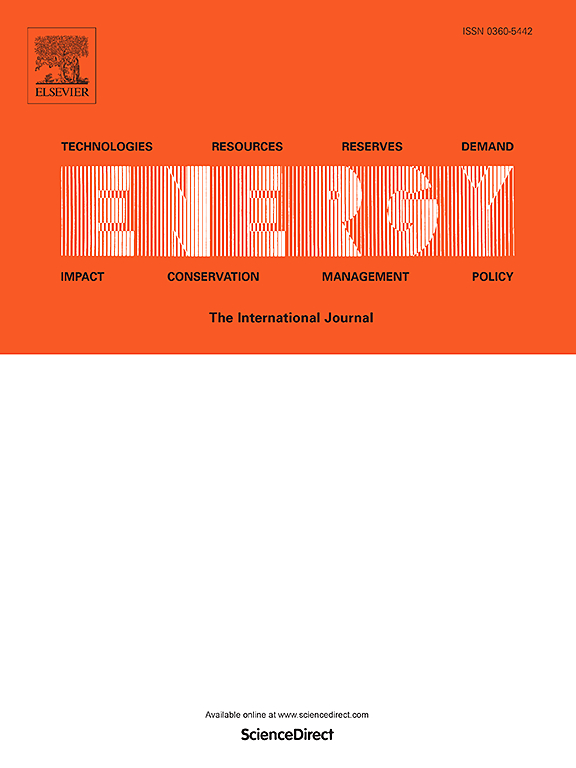不凝性气体中心-水两相喷射器的数值模拟
IF 9
1区 工程技术
Q1 ENERGY & FUELS
引用次数: 0
摘要
采用气液喷射器可以有效地提高系统性能,同时实现蒸汽冷凝和不凝性气体的溶解和排放。在不凝性气体存在的情况下,喷射器的流场和性能受到很大的影响。本文采用两相欧拉模型,水为一次流,蒸汽和空气为二次流。全面研究了不凝性气体对水心两相喷射器的影响。结果表明:随着背压的增大,蒸汽翼逐渐向上游后退,混合腔内压力增大;一次流入口压力的增加使喷射器内部的流动由亚音速过渡到超音速。不凝性气体含量的影响主要集中在混合室内。随着不凝性气体含量的增加,混合腔内压力增大,速度减小,轴向液体体积分数增大,喷射器喷射能力降低。当进口压力为1.60 MPa时,将不凝性气体的含量从1%增加到15%,吸入比从2.13%降低到2.01%,降低了5.6%。在进口压力较低时,不凝性气体含量对喷射器的影响更为明显。本文章由计算机程序翻译,如有差异,请以英文原文为准。
Numerical simulation of a center-water two-phase ejector with non-condensable gas
The application of gas-liquid ejectors can effectively improve system performance while achieving steam condensation and non-condensable gas dissolution and discharge. In the presence of non-condensable gases, the flow field and performance of the ejector are significantly affected. This paper employs the two-phase Eulerian model, with water as primary flow and steam and air as secondary flows. The effects of non-condensable gas on a water-centered two-phase ejector were comprehensively investigated. The results show that as the backpressure increases, the steam wing gradually retreats upstream, and the pressure within the mixing chamber increases. Increasing the primary flow inlet pressure causes the flow inside the ejector to transition from subsonic to supersonic. The impact of the non-condensable gas content is primarily concentrated in the mixing chamber. As the non-condensable gas content increases, the pressure in the mixing chamber increases, the velocity decreases, the axial liquid volume fraction increases, and the ejector's injection capability decreases. When the inlet pressure is 1.60 MPa, increasing the non-condensable gas content from 1 % to 15 % leads to a reduction in the entrainment ratio from 2.13 % to 2.01 %, a decrease of 5.6 %. The influence of non-condensable gas content on the ejector is more pronounced at low inlet pressures.
求助全文
通过发布文献求助,成功后即可免费获取论文全文。
去求助
来源期刊

Energy
工程技术-能源与燃料
CiteScore
15.30
自引率
14.40%
发文量
0
审稿时长
14.2 weeks
期刊介绍:
Energy is a multidisciplinary, international journal that publishes research and analysis in the field of energy engineering. Our aim is to become a leading peer-reviewed platform and a trusted source of information for energy-related topics.
The journal covers a range of areas including mechanical engineering, thermal sciences, and energy analysis. We are particularly interested in research on energy modelling, prediction, integrated energy systems, planning, and management.
Additionally, we welcome papers on energy conservation, efficiency, biomass and bioenergy, renewable energy, electricity supply and demand, energy storage, buildings, and economic and policy issues. These topics should align with our broader multidisciplinary focus.
 求助内容:
求助内容: 应助结果提醒方式:
应助结果提醒方式:


